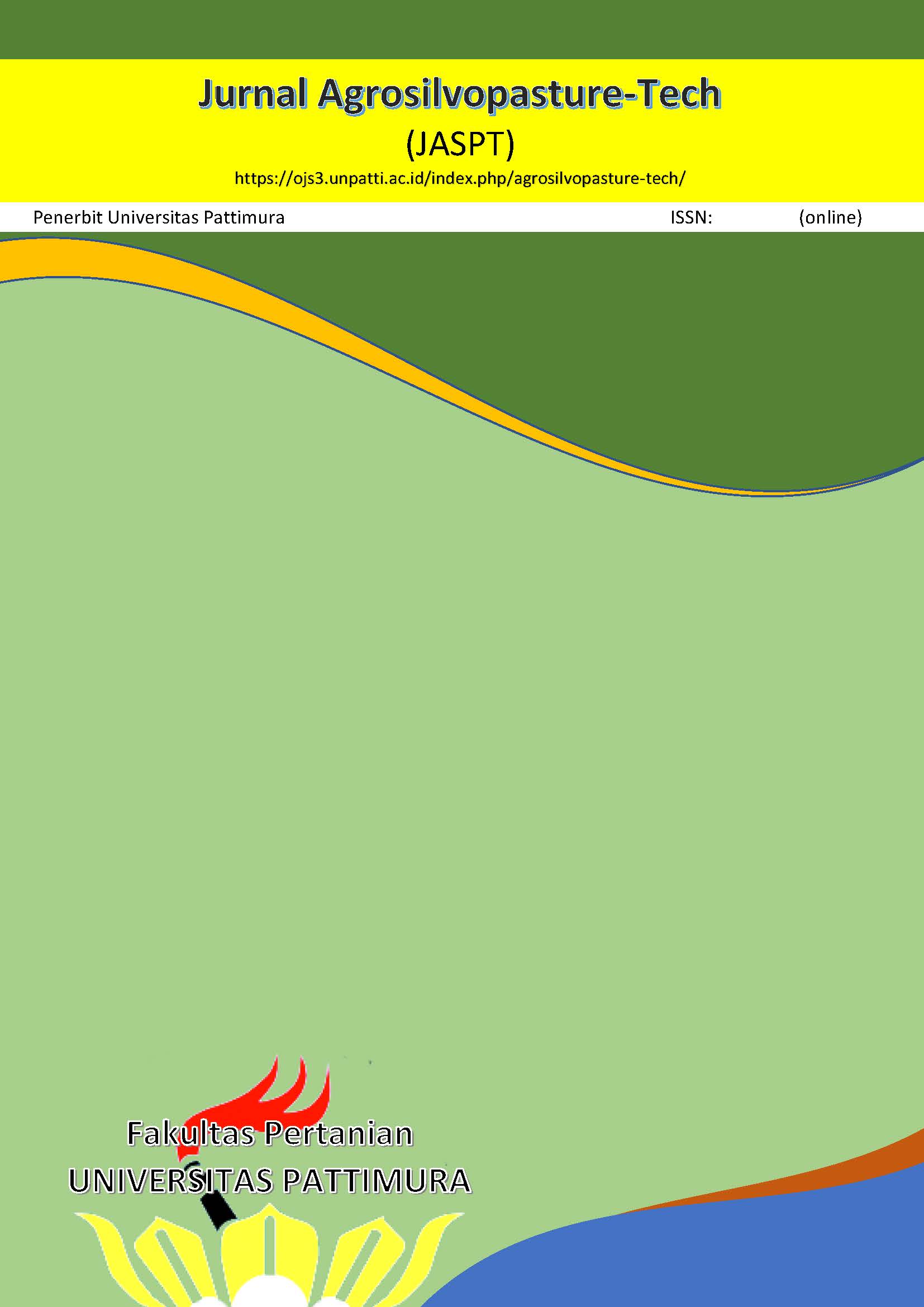Characteristics of Ice Cream With the Addition of Nutmeg Puree (Myristica fragrans Houtt).
Abstract
Ice cream is one of the frozen processed products with milk-based ingredients and has various flavors, colors, and soft textures, so many enthusiasts are among the public, from children to adults. Ice cream flour is flour that is processed from various milk mixtures. This study aims to determine the appropriate concentration of nutmeg puree on the characteristics of ice cream. The experimental design used was a completely randomized design consisting of one factor, namely the addition of nutmeg puree with four treatment levels, as follows: (P0) Control without adding nutmeg puree, (P1) 50 g of nutmeg puree or 4.9%, (P2) 100 g nutmeg puree or 9.8% (P3) 150 g nutmeg puree or 14.7%. Based on the results of the study, it can be concluded that the treatment of adding 100% nutmeg puree was the best result with a total dissolved solids value of 22.57%, vitamin C 0.03%, the fat content of 1.51% and chemical-physical tests in the form of overrun and melting rate respectively 51.38% and 15.74 minutes. Based on organoleptic tests, including color, taste, aroma, and texture, adding 100% nutmeg puree gave a liking value.
Downloads
References
AOAC. (1995). Official Methods of Analysis. Association of Official Analytical Chemists.
Arief, R. W., AB, F., & Asnawi, R. (2015). Potensi pengolahan daging buah pala menjadi aneka produk olahan bernilai tinggi. Bul. Littro, 26(2), 165-174.
Asmariani, Amriani, & Haslianti. (2017). Verifikasi metode uji lemak pakan buatan. Fistech – Jurnal Teknologi Hasil Perikanan, 6(1), 92-96.
Aulia, Z., & Purwidiani, N. (2017). Pengaruh penambahan puree sirsak (Annona muricsts L.) dan ekstrak daun sirsak terhadap sifat organoleptik es krim. e-jouernal Boga, 5(1), 40-47.
Badan Standar Nasional. (1995). Es Krim. Badan Standarisasi Nasional (1), 3713.
Baedhowie, M. (1983). Petunjuk Praktek Pengawasan Mutu Hasil Pertanian. Departemen Pendidikan dan Budaya.
Bolliger, S., Goff, H. D., & Tharp, B. W. (2000). Correlation Between Colloidal Properties Of Ice Cream Mix and Ice Cream. International Daily Journal, 10(4), 303-309.
Hartatie, E. S. (2011). Kajian formulasi (bahan baku, bahan pemantap) dan metode pembuatan terhadap kualitases krim. GAMMA, 7, 20-16.
Hasanuddin, Dewi, K. H. & Fitri, I. (2011). Pengaruh proses pembuatan es krim terhadap mutu es krim berbahan baku pisang. Jurnal AgroIndustri, 1(1), 1-7.
Hok, K. T., Setyo, W., Irawaty, W., & Soetaredjo, F. E. (2007). Pengaruh Suhu dan Waktu Pemanasan Terhadap Kandungan Vitamin A dan C Pada Proses Pembuatan Pasta Tomat. Widya Teknik, 6(2), 111-120.
Khasanaha, S. K., Susantia, S. & Legowo, A. M. (2020). Karakteristik es krim kefir puree buah naga merah sebagai pangan fungsional antiobesitas. Jurnal Teknologi Pangan dan Gizi, 19(2), 53-62.
Lawless, H. T., & H, H. (2010). Sensory Evaluation of Food (Principle and Practices) Second Edition. New York: Springer.
Levi, A. C. (2008). Membuat Es Krim. Jakarta: Agromedia Pustaka.
Padaga, M. & Sawitri, M. E. (2005). Es Krim yang Sehat. Trubus Agrisarana. Surabaya.
Rahmaniar, A. (2019). Karakteristik Es Krim Dengan Penambahan Puree Gandaria (Bouea macrophylla. Griff). Ambon: Universitas Pattimura.
Simanungkalit, H., Indriyani, & Ulyarti. (2016). Kajian Pembuatan Es Krim Dengan Penambahan Kacang Merah (Phaseoulus vulgaris L.). Jurnal Teknologi Pertanian, 18(1), 20-26.
Standar Nasional Indonesia. (2013). puree buah. Badan Standarisasi Indonesia, SNI 7841.
Winarno, F.G. (2004). Kimia Pangan dan Gizi. Gramedia Pustaka Utama. Jakarta.
Copyright (c) 2023 The Author(s)

This work is licensed under a Creative Commons Attribution-ShareAlike 4.0 International License.




.png)

